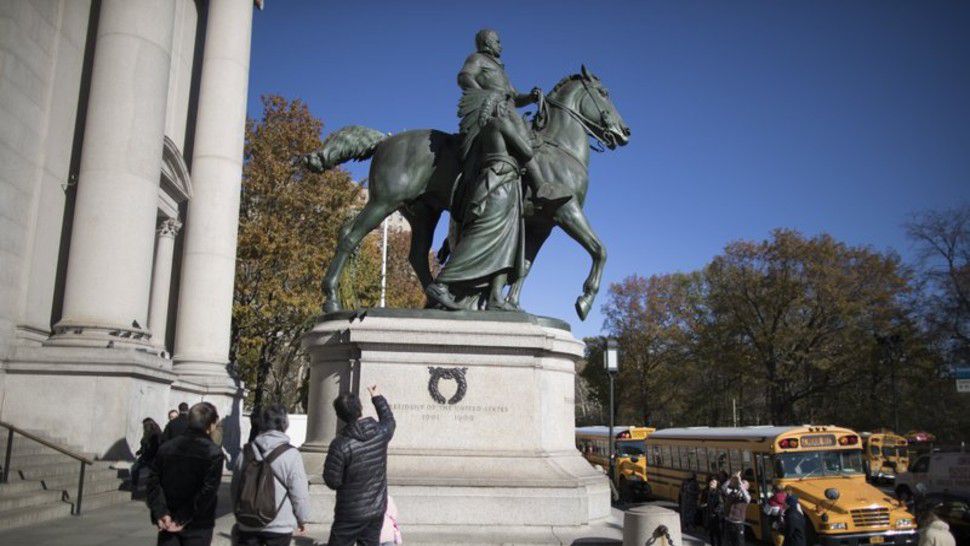NEW YORK -- As protesters call for the removal of Confederate and other controversial monuments - sometimes taking matters into their own hands - in the wake of the death of George Floyd, another statue is now set to be removed.
The American Museum of Natural History in New York announced the Theodore Roosevelt monument located at the museum’s entrance will be removed following years of protests.
It’s not that Roosevelt is particularly controversial. Rather, it’s the manner in which he and two figures are depicted that has garnered outcry. The bronze statue, which has stood in its current location since 1940, depicts Roosevelt atop a horse. He is flanked by a Native American man and an African man.
Critics say the statue is racist because it depicts the African man and Native American man as inferior, with New York Mayor Bill deBlasio further describing them as “subjugated” and the statue “problematic.”
Speaking to the New York Times, the museum’s president, Ellen Futter, said the museum’s “community has been profoundly moved by the ever-widening movement for racial justice that has emerged after the killing of George Floyd.”
President Donald Trump reacted to the decision, tweeting: “Ridiculous, don’t do it.”
Roosevelt’s great-grandson, Theodore Roosevelt IV, in a statement to the New York Times, concurred with the decision, writing: “The composition of the Equestrian Statue does not reflect Theodore Roosevelt’s legacy. It is time to move the statue and move forward.”
It’s not yet know when the statue will be removed or where it will be relocated to.
Theodore Roosevelt, a Republican, was the 26th president of the United States of America, from 1901-1909. A naturist and conservationist, he also served as vice president and was New York’s 33rd governor, from 1899-1900. Generally regarded by historians as one of American’s greatest presidents, his face is depicted on Mount Rushmore along with Abraham Lincoln, George Washington and Thomas Jefferson.
The Associated Press contributed to this report.



